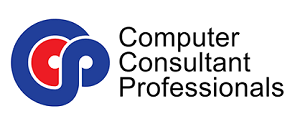You don’t need to wait to feel the repercussions if your business fails to secure sensitive data. Remember that information security has the power to make or break your business.
Data breaches and fraud are among the most common problems a business faces, no matter what size, affecting about 25% of businesses. This security issue is enough to push anyone to the brink of bankruptcy.
As damaging as these threats are to your business’ security, you can avoid these from happening with the proper safeguards in place. In ensuring continuity, investing in the right methods is essential. Here are some simple steps that you can take to protect and keep that data secure.
1. Have everything encrypted
Hackers can penetrate even the toughest defenses. They can trick you into clicking a phishing email attachment. One of the best defenses is encrypting. Because most hackers tend to copy or expose thousands of lines of customer data, an encrypted database will ensure that they have nothing.
Even the best hackers with no encryption key will have thousands of unreadable gibberish.
Therefore, one of your best defenses is to ensure that everything is encrypted. Microsoft supports encryption, making it easier for you to encrypt many aspects of your business.
However, if you have independent software developed internally, you need to include your encryption code. Choosing the right database management services is also important.
2. Always check for vulnerabilities
Vulnerabilities are what you call loopholes and security gaps in your business software. Every software has its vulnerabilities, and there’s always room for improvement.
Vulnerability scanning lets you check the software stack for loopholes or security gaps. It will look for any software issues hackers might use against you to access your system or cause you damage.
Ideally, a scan should provide you with a map of issues and ways you can be able to resolve them.
3. Don’t keep passwords
Another tip is to not keep passwords. Ideally, it would be best to have two-factor authentication in your most essential apps. If you don’t have it yet, make sure you take your time setting it up.
In a nutshell, two-factor authentication is a security process that needs not one but two verification methods before you can log in.
In the same way, having strong passwords and regularly changing them makes it difficult for thieves to access information. Make sure that you pick a strong password, but at the same time, it should also be memorable so that you don’t have to write it down. If you need to write it down, make sure to keep it safe and secure.
Here are some best practices for having strong passwords:
It shouldn’t have any part of your name or ID.
It should be at least seven characters long.
It should have at least two characters of these four categories: upper and lower case letters, numbers, and symbols.
4. Look for a reliable database management service
A Data Management System (DBMS) Service is a set of programs that lets you access, retrieve or use data by considering the appropriate security measures.
Having a DBMS is helpful if you have better data integration and enhanced security.
5. Stable network monitoring
Like encrypting, network monitoring is a security measure that allows you to fight malware lurking in your system.
Ideally, it watches all basics but in greater depth. It lets you know the servers’ temperature and how many packets are coming through your gateways. If properly configured, you can quickly know any suspicious resource usage or behaviors in your communications on the internet or in your network where there’s malware.
Microsoft also provides local network monitoring or the Microsoft Network Monitor option.
6. Allow permission levels for employees
All of your employees shouldn’t have the same access to your system. Ideally, it should only be from people you can trust with this sensitive information.
Choose a system that lets you set permission levels for your employees. It allows you to have power over people who have access to what information on the back end.
7. Clear out old data
In the same way, companies are also constantly storing data, usually with different internal servers and third-party hosts. It’s easy to lose track of how much data you’ve stored or archived and not used anymore.
So make sure that you regularly do an annual data audit to clear out data that are no longer useful for you.
However, you may want to keep historical use cases. If this is the case, you may want to remove any identifying data and only keep the survey information you wish to record.
8. Patch and Update
Another common vulnerability is a software patch. In most cases, if the scanning software couldn’t find it, the original developers would recognize any flaws, fix them, and release updates.
However, you may or may not have automatic or optional updates and, therefore, skipped. You may want to set automatic updates for both Microsoft and independent software. Ensure that you also check optional patches and updates to fix these security vulnerabilities.
Over to You
It’s worth noting that the more layers that you’re adding, the more secure your business will be in the long run. The more techniques to enhance security, the less likely an accident breach occurs.
Hopefully, these tips will get you moving in the right direction in keeping your data safe and secure. Follow these handy tips to protect your business and data successfully.

